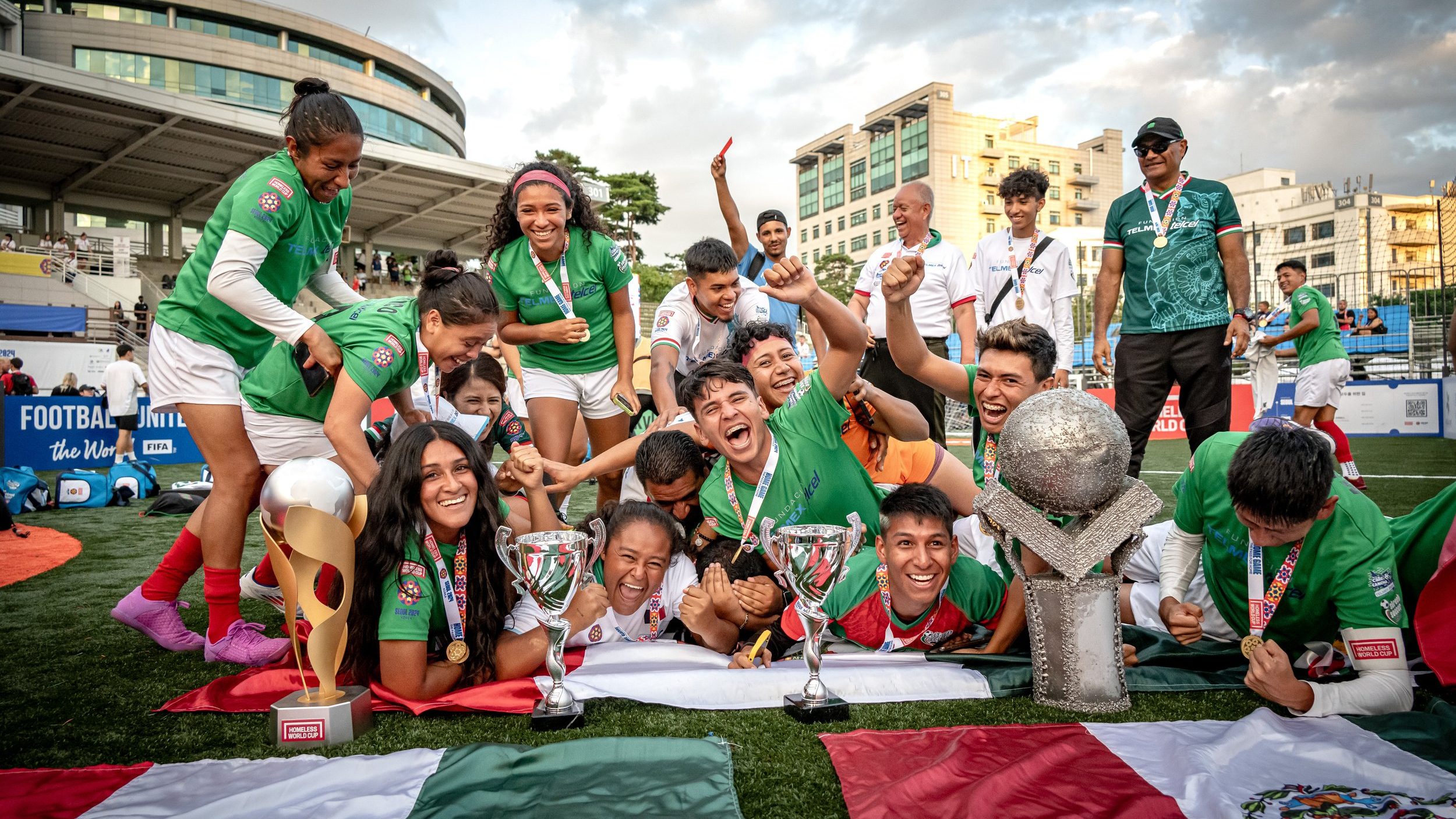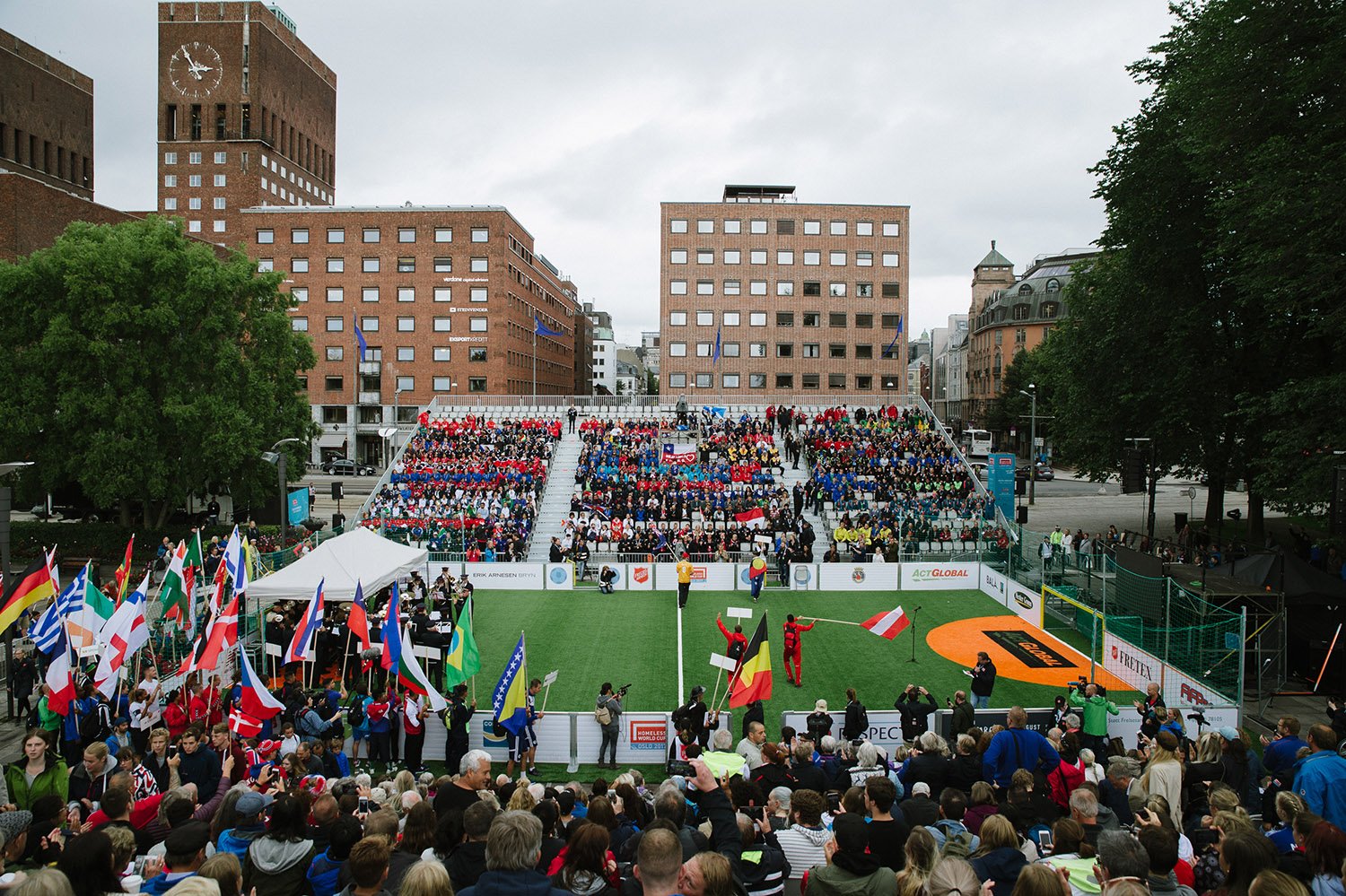Today, there was a man on the corner of the street, his clothes were worn and old, and everything he seemed to own were in trash bags in a grocery cart. When passing him, one could see the strip of cardboard in his hands, reading, “Please help, God bless,”. Tonight, when you go to lay your body down to rest will you be under the comforts of a roof or will you be huddling atop of a park bench? Will your next meal be found amidst the contents of your fridge or will you have to pan handle to buy it? When you have a low day, can you go to your family or do you suck it up because you lost your family due to poor life decisions? This is homelessness, and the latter of the hypotheticals is not just someone’s life; it’s estimated to be over 150 million individuals’ reality worldwide.

Here’s the thing: there was an idea to end this reality and step into a new one, well kick, actually. In 2001, Mel Young and Harald Schmied, came up with the Homeless World Cup (HWC)- a yearly street football (soccer for the Americans) tournament where world-class teams compete against one another. Here’s the kicker, the players are all those who’re experiencing homelessness.
How does football help?
Simple, football can rewrite their story. People who experience homelessness are often ostracized by the world due to the stereotypes and stigmatization that claims that anyone identifying as homeless is lazy, dirty, dangerous, mental, and substance abusers. That kind of constant isolation can dismantle one’s humanity, steal away their sense of self, and terrorize their vulnerabilities. What football does is remove these individuals from the ceaseless exclusion and places them in a community of equal footing. When they’re a part of the team they are no longer individuals solely responsible for themselves, but for their company. Football teaches them to not only be reliable but to rely, to trust that their team, community, and their volunteers will always have their back. In time the players break the stereotypes and step into a new identity, they’re taken out of the mindset of, “you don’t belong anywhere,” to being a member of the biggest humanitarian effort to save the world. Thus the player’s narratives aren’t defined by
How do you play?
On the pitch each side will have 4 players, that’s three outfielders and one goalie (each team consists of eight). They’re allowed rolling substitutions throughout the game. There should always be one attacker from the opposing team on each side. Each match is 14 minutes each and if the game ends up tied then it goes to sudden death penalties, there are no draws. All matches are considered fair play, meaning that all involved respect the rules and each other.
Around 68 countries participate, and every year since its debut in 2003 in Graz, Austria, the host country changes. Last year (2024) the HWC was held in Seoul, Korea, and this year (2025) it’ll be held in Oslo, Norway. The event itself is free to the public as is the live broadcast on the HWC website, YouTube, and streaming on Fifa+ as well as certain teams Facebook pages. Meaning that anyone who wants to watch, or attend is able and what they’d be witnessing is the chance for sports to give someone a second chance at life.
How do you win?
By now you can tell that football is not the focal point of the HWC, it’s merely a vessel for change. So it might not surprise you that being presented with a 3 ft trophy for scoring a lot points isn’t how this game is won. You win by showing up, by recognizing the potential to be for your fellow humans. You win by saving each other. The goal is that the tournament will, one day, cease to exist. Meaning that if homelessness is the problem and the reason the Homeless World Cup exists, then the eradication of homelessness brings an end to the competition because everyone will have a place to belong. In other words, they play soccer to bring everyone home.
So shoot your shot and we’ll win together.

To learn more about the Homeless World Cup, other projects, or to be a part of the change visit:

Leave a Reply